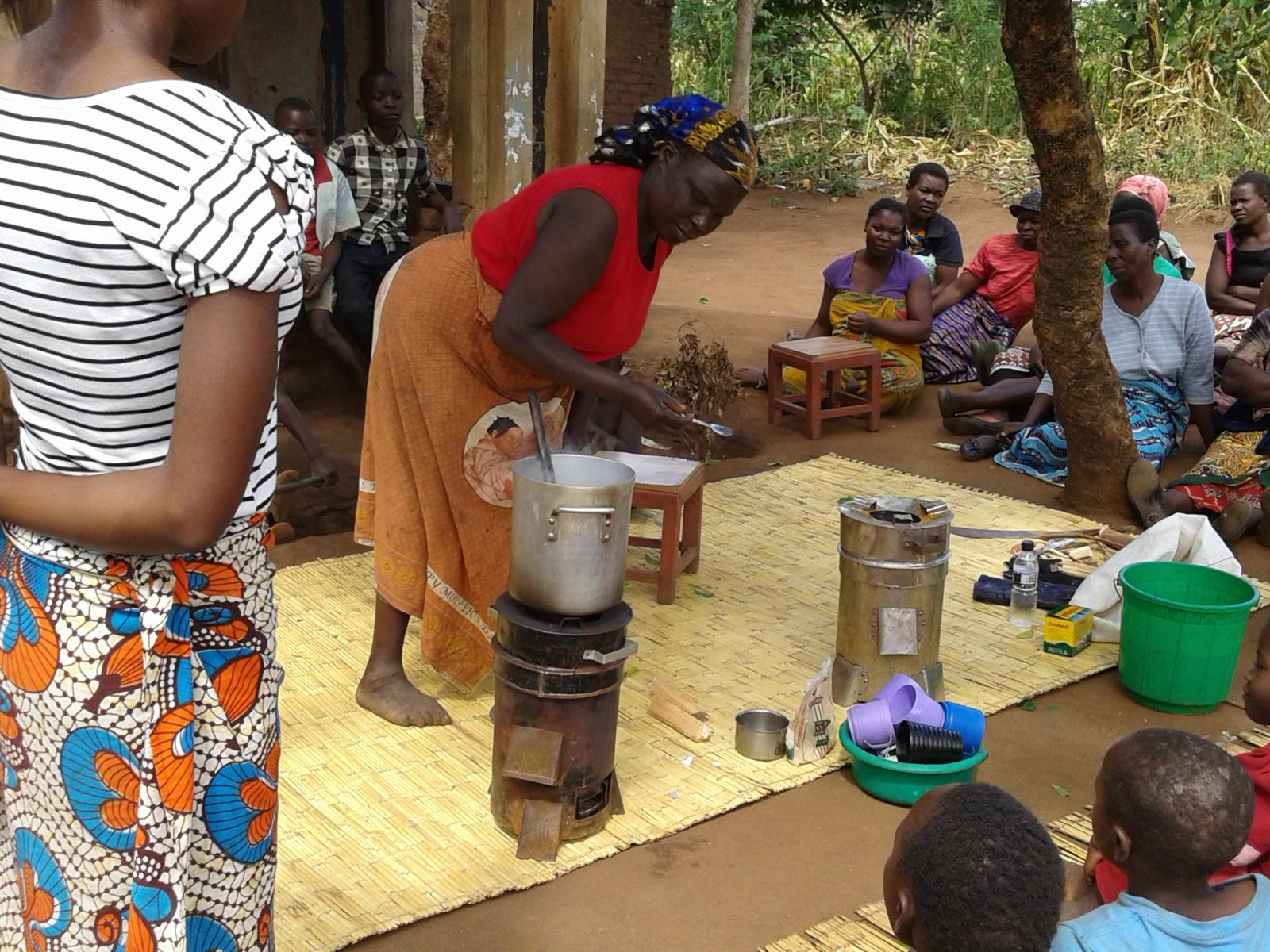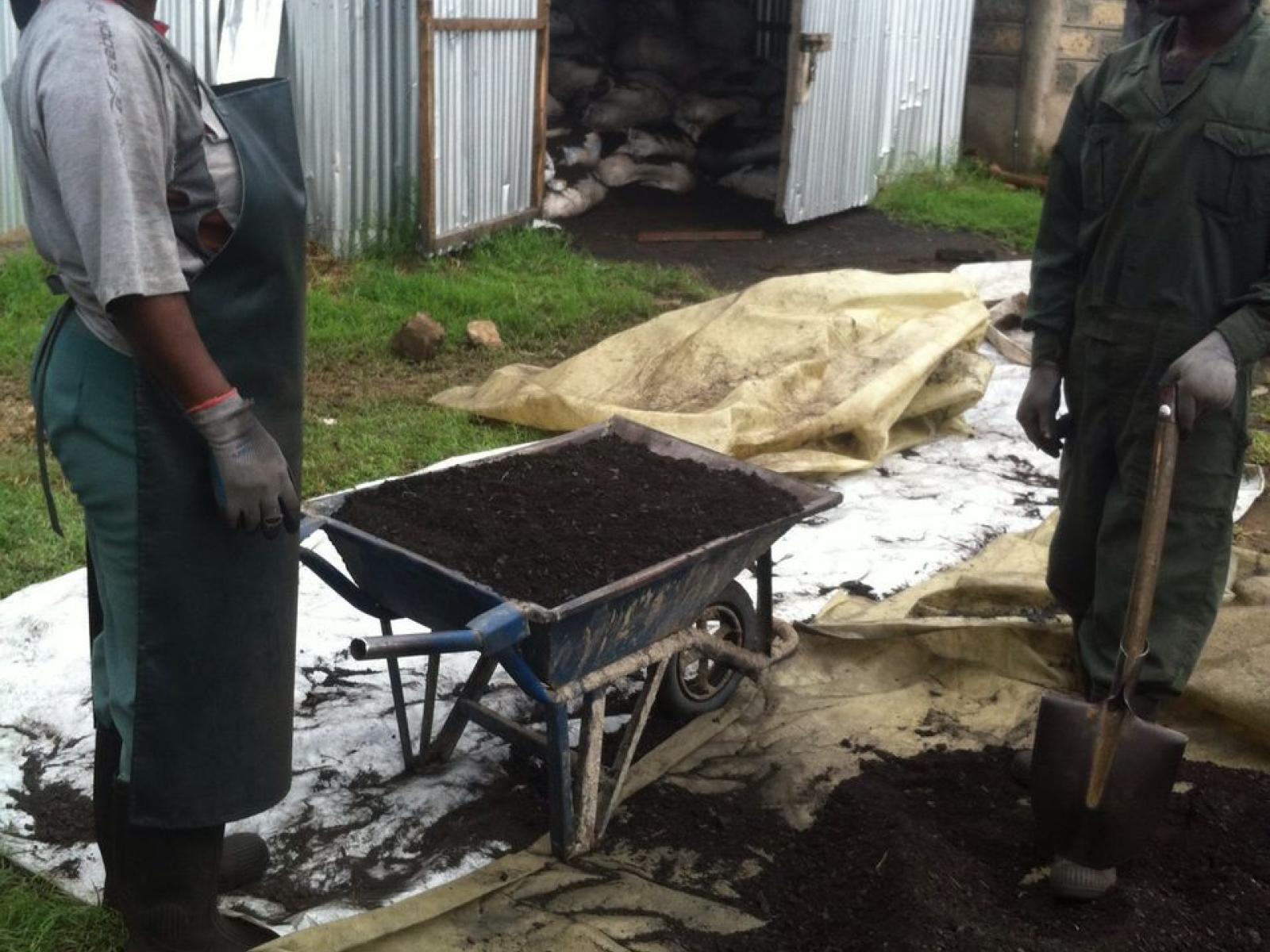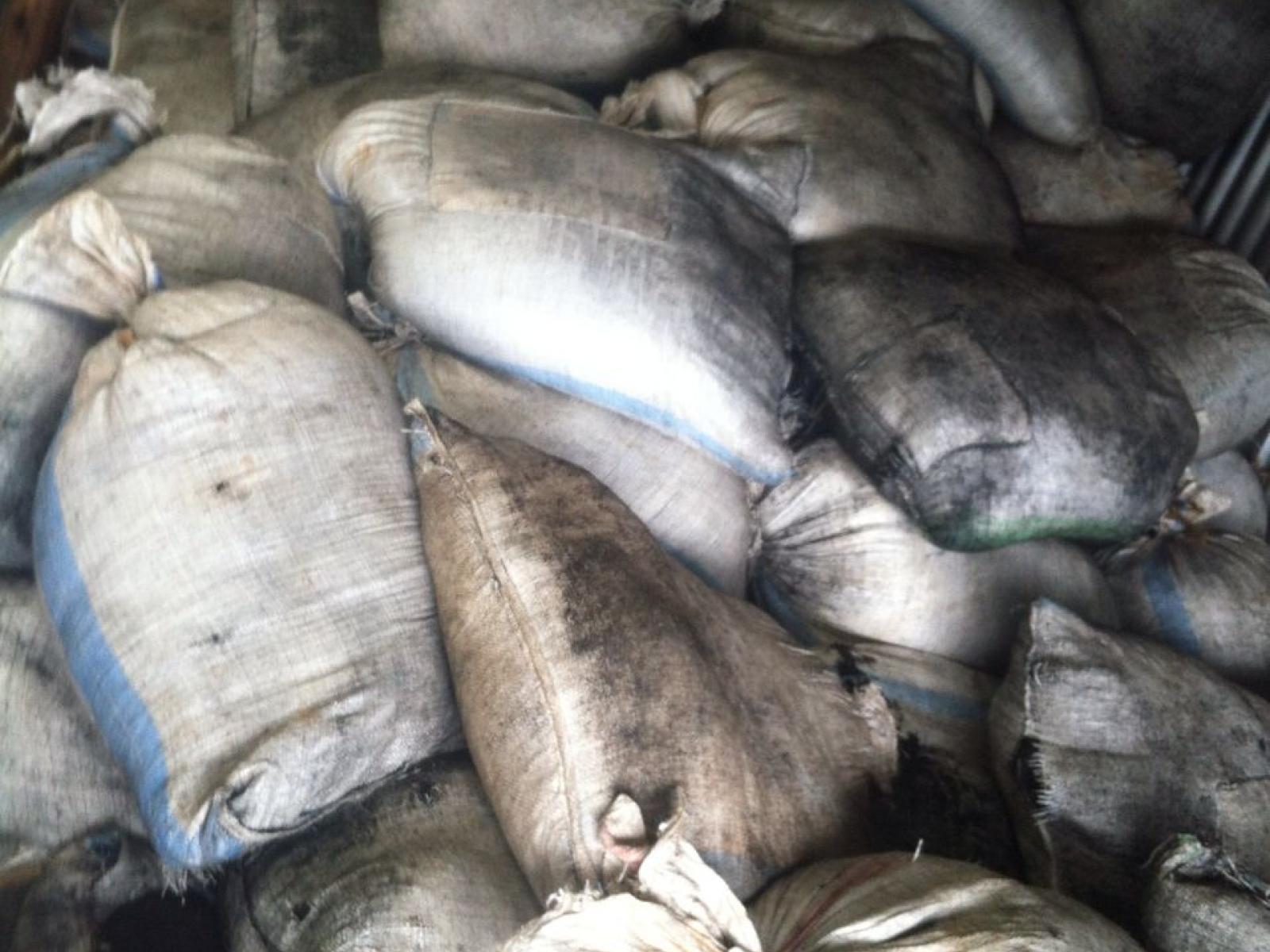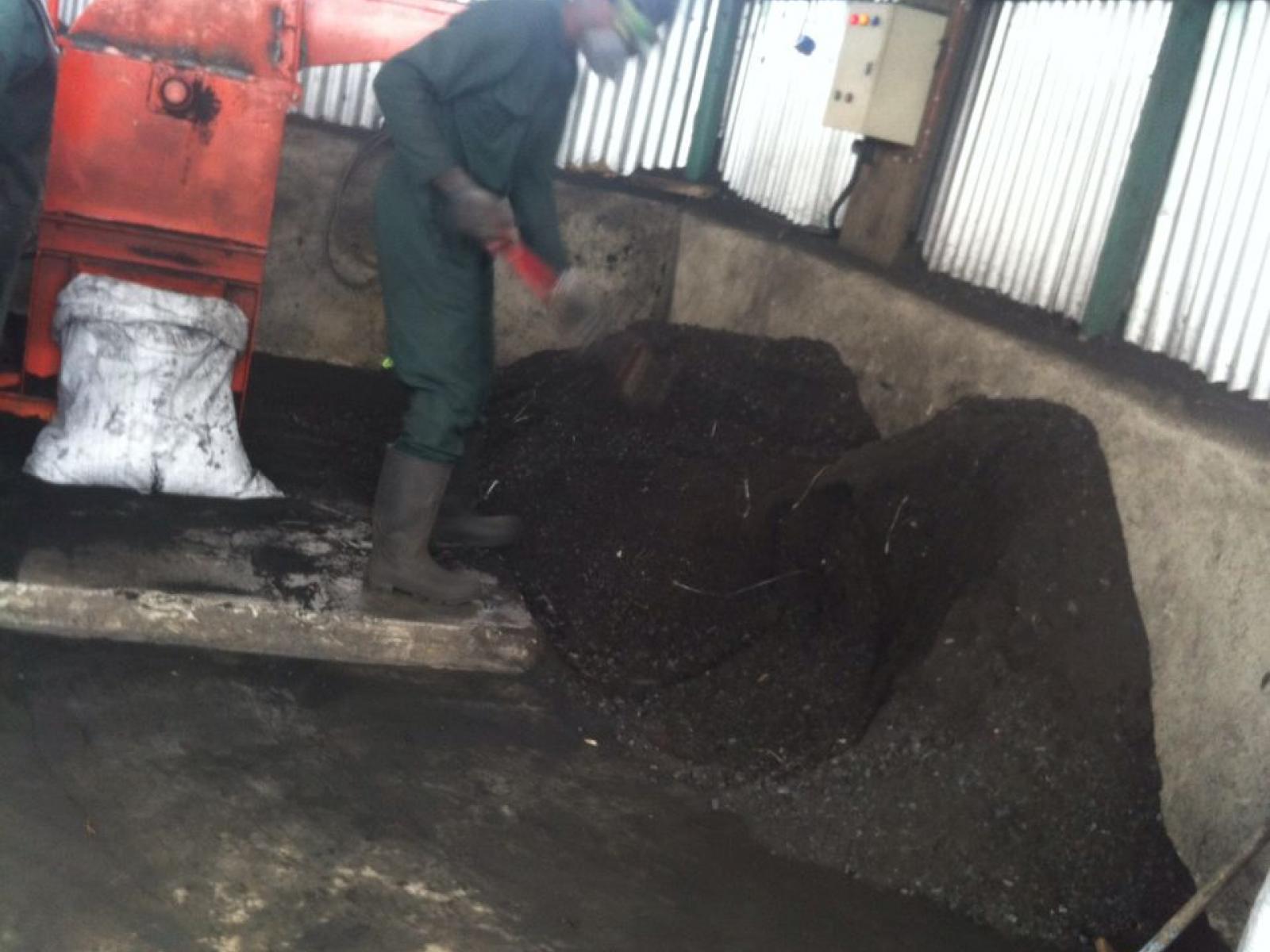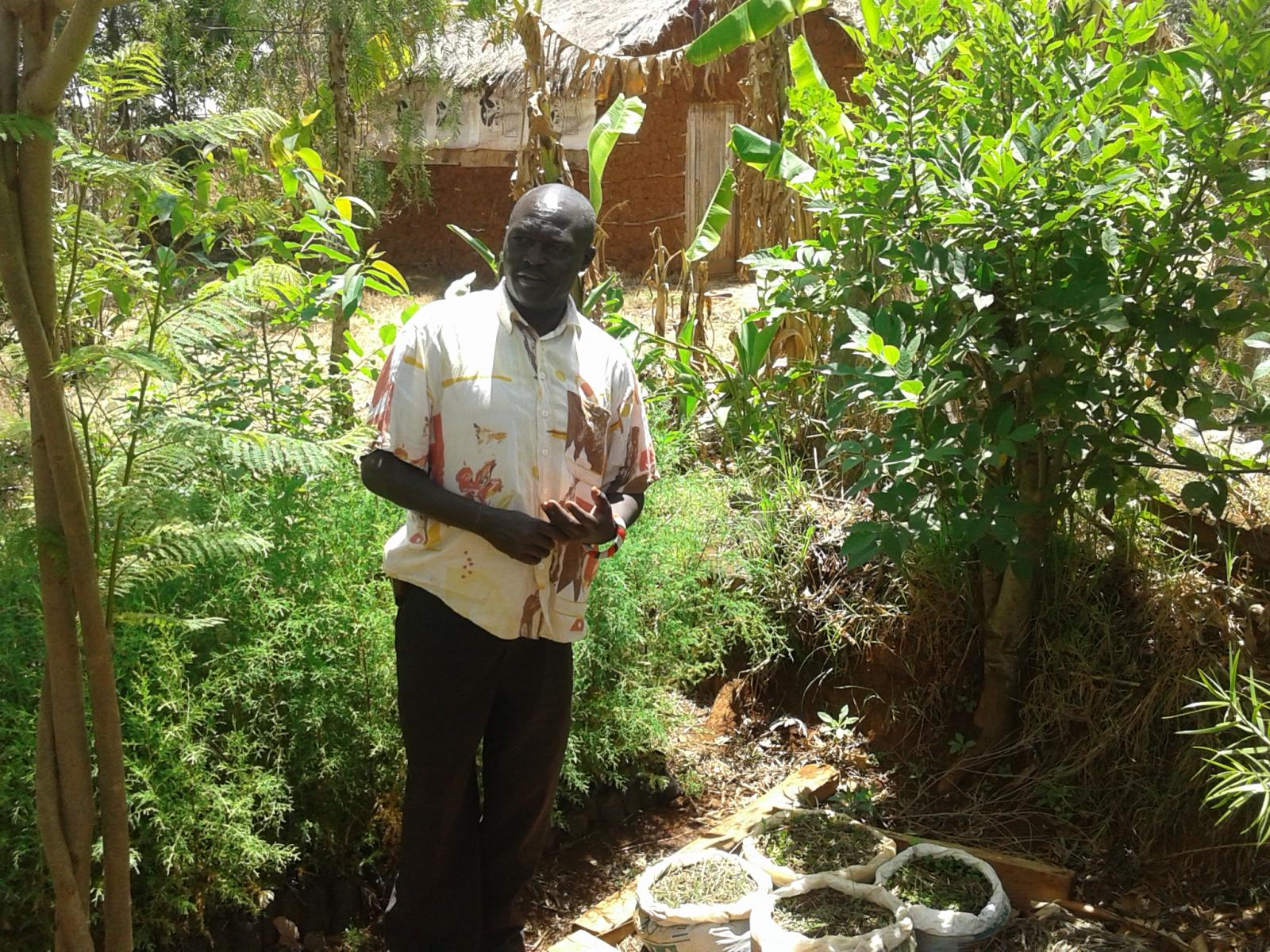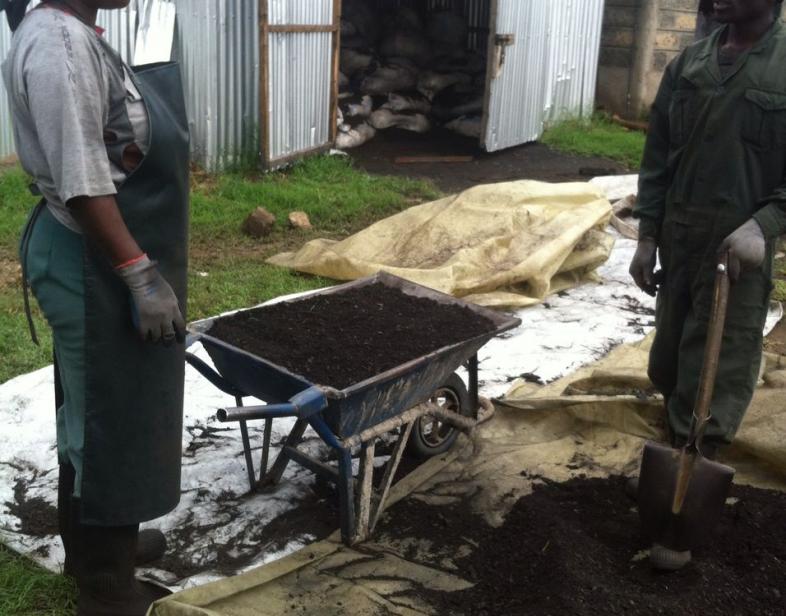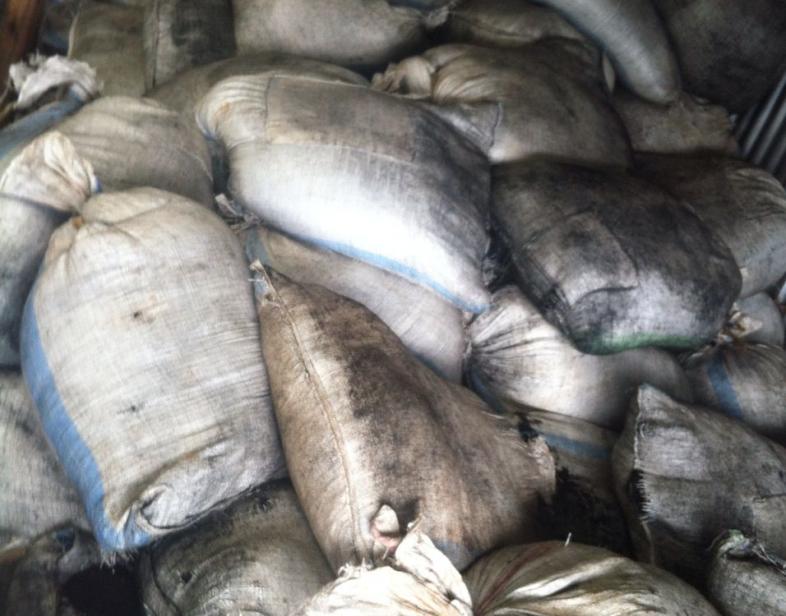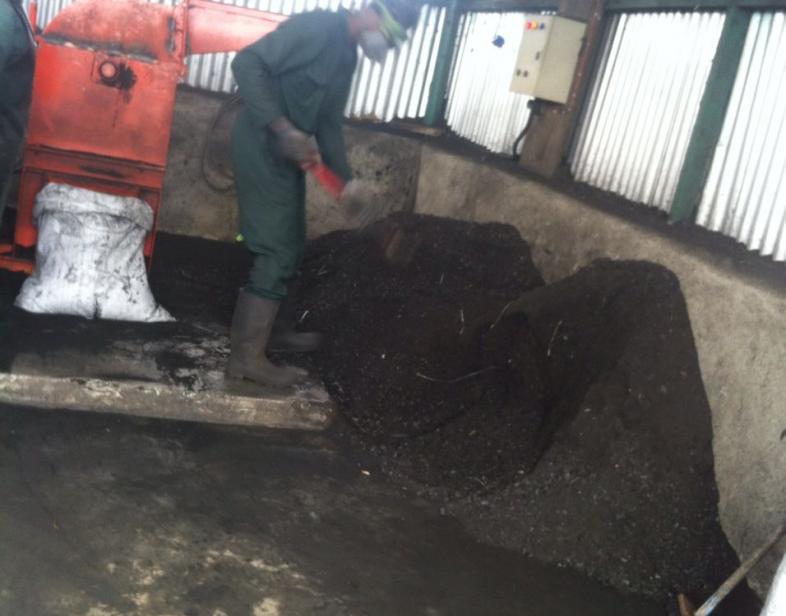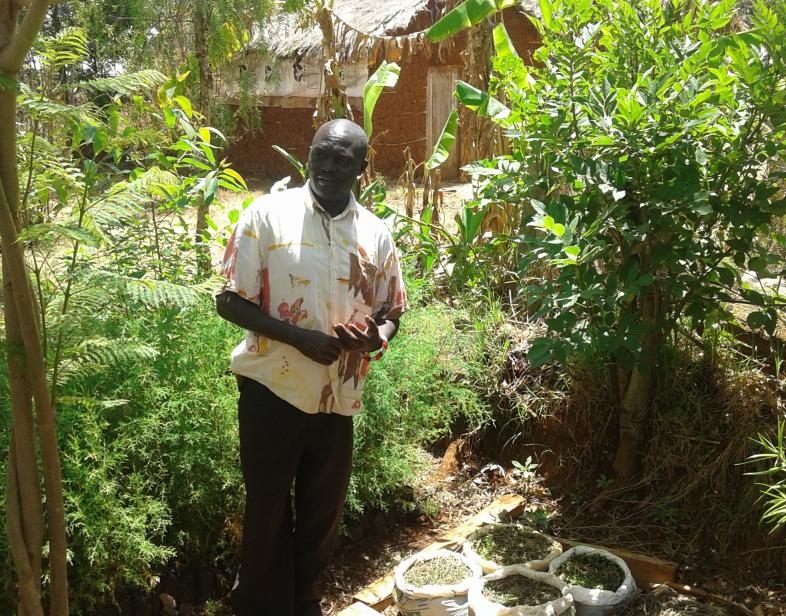An Overview Of Our Solution
Most rural Kenyans use forest wood as a fuel for cooking and heating. The percentage of rural households using wood as a fuel in South Saharan countries varies from 86 to 99% . Kenya's percentage is about 90%. The average household uses about 14 kilograms of wood per person in the household per week. Inefficient use of firewood (most Kenyan's use only a three stone cook stove) contributes to a number of issues in Kenya:
1. Widespread use of firewood for cooking and heating is a major contributor to rapid deforestation.
2. Firewood purchases represent a significant percentage household budgets - costs are increase yearly as forests are depleted.
3. Indoor use of inefficient cooking stoves contributes to deaths due to respiratory illness.
- Population Impacted: 1,250,000
- Continent: Africa
Context Analysis
Mrs. Shabani chose Ecological Agriculture: monitoring her field for the presence of the pest, and for plant damage. This method consists of walking around the plot to identify affected plants, pull them out, and burn them far from the field. This was difficult, but she was able to do it thanks to relatives and neighbouring farmers who helped her for a month.
She says the method was very effective; her maize plants are no longer affected by Fall armyworm and she is hoping for a better harvest this year. According to Mr. Visseso, the three methods are approved by the UN Food and Agriculture Organization as ways to manage Fall armyworm. The expert adds that they are all effective.Known by the scientific name Spodoptera frugiperda, Fall armyworm caused a great deal of damage in the second season of 2016-17. Some farmers lost two-thirds of their crops. The pest eats mostly maize, but may feed on dozens of other plants"
Describe the technical solution you wanted the target audience to adopt
The zai hole biochar cycle is a synergistic and holistic system which can continually reduce CO2 emissions, as well as increase CO2 fixation and long term carbon sequestration, in an ongoing and upward spiral of social, climatic and ecological benefits.
Zai holes have been proven to greatly increase crop growth on small hold farms in various parts of Africa (from 40% through to an amazing 600%), and tree growth in reforestation projects, as well as on-farm windbreaks and woodlots, particularly in infertile soils in hot dry climates.
Increased plant growth on farms and in reforestation projects means increased CO2 fixation. Increased plant growth results in increased long term sequestration of carbon as humus in soils. Increased on farm fuel production also reduces deforestation of natural forests that occurs because of the high demand for fuel wood. Retained forests continue to fix CO2, and produce water vapour through evapo-transpiration
Type of intervention
Describe your behavioral intervention
Adding biochar to zai holes can further enhance plant growth and CO2 fixation, and the biochar in the soil in the zai holes sequesters carbon for thousands of years. Crop wastes, which could include wood from relay planted rotational plants (for example, the small and fast-growing tree Sesbania sesban, and the fast-growing shrubs Crotalaria grahamiana and Tephrosia vogelii in Western Kenya) and fuel wood from plants grown in zai holes in woodlots and windbreaks, can be used in fuel efficient stoves. These stoves reduce CO2 emissions compared to typical three stone wood fires, and also reduce particulate (black carbon) pollution. This last benefit reduces health problems and also negative impacts on the climate. Finally, fuel efficient stoves also require less wood or other fuel and so they reduce deforestation.
In some cases, environmental weeds (such as water hyacinth) can also provide additional fuel for stoves and produce biochar, or at least ash (ash from stoves is useful as fertilizer in zai holes), with numerous positive ecological consequences.
Fuel efficient stoves produce biochar, so that biochar can then be incorporated into existing and new zai holes, resulting in ongoing and increasing co2 fixation and long term carbon sequestration. The increasing incorporation of biochar into existing zai holes and the ongoing creation of new zai holes then provide more and more fuel for the stoves, which produce more biochar for the zai holes.
.
As needed, please explain the type of intervention in more detail
In addition to the above, adding animal and possibly sterilized human manure (which could be done using solar cookers) to zai holes can also increase tree or crop growth and carbon fixation, providing and recycling otherwise wasted nutrients, and ultimately sequestering carbon as humus. The humus in turn increases plant growth/carbon fixation, and storage.
Diluted livestock and human urine are also be recyclable as a free fertilizer to increase plant growth in zai holes.
Biochar can also be fed to livestock (with molasses to entice them to eat the biochar), which reduces their methane emissions, a greenhouse gas many times more potent than CO2. The biochar is then defecated by the livestock and incorporated into soils by dung beetles and earth worms, providing long term carbon sequestration and increased pasture growth and thus CO2 fixation. For more on this, see the “Animal Improved Dung plus Seeds” treatment on the web site Reforestation.me.
Describe your implementation
Women lead the charge. Most smallhold farmers, fuel collectors and cooks in Kenya, and much of Africa, are women. Women play a crucial role, and the success, adoption and scaling up of agroecological solutions must start with them, and spreading such solutions also depends largely on them. Knowledge is spread from farmer to farmer and family farmers in general need to take on the responsibility for scaling up agroecological solutions, as governments are not likely to take the lead. Solutions mostly come from within the community (but also NGO’s and outside individuals).
We need to strengthen support for local food systems grounded in local biology and culture that emphasize indigenous production agriculture. We also need processing and marketing systems that are created by and serve local people. We call this ‘endogenous food value chains’. In addition, we need to link community resilience with local government support. In general, we work to support initiatives that contribute to ecosystems building resilient communities that are able to design and implement their own agro-ecological initiatives. At the same time, it is also important to strengthen local government structures and viable rural farmers ownership
Agro-ecology creates jobs, especially for youth. Where there is youth unemployment, there is a need to open up markets to agro-ecological produce. It is essential to strengthen local value chain and market development - the local food web. Agro-ecology has the potential to be a viable economic and ecological alternative for many who seek to return from cities and work in rural villages, however, access to local markets is key. The demand for native crops also needs to be strong to incentivize agro-ecological farming.
Knowledge transfer to youth.
Young people are the next generation of family farmers. It is important to support youth and to facilitate intergenerational knowledge transfer. School curriculums .
External connections
In this context, resilience strategies are crucial safeguards against the worst impacts of climate change. Agro-ecology builds resilience in various ways. It protects local foods systems, builds community solidarity, creates alternative income streams for farmers and its practical application restores lands. In this way, agro-ecology is both an environmental solution and a social one. Both are needed to protect communities against the worst impacts of climate change. To ensure full community participation and a strong sense of local ownership, ACON uses three key elements:
the use of the PRA (Participatory Rural Appraisal);
community implementation of activities;
and cost sharing.
Who adopted the desired behaviors and to what degree?
Our biochar soil treatment trials have shown a doubling and sometimes even a tripling of crop yields, and have therefore achieved wide community interest and uptake. Moreover, when biochar is mixed into the soil, carbon is sequestered, and so we are also really doing something very significant about climate change. The fuel-efficient stoves thus produce a valuable product that can be used by the owner for further cooking, for sale, or for soil improvement. Wood, or other biomass that a villager would have collected or paid for and burnt anyway for cooking, can therefore provide further benefits without additional cost.
Ideally, 35,000 farmers and 25,000 stove users produce biochar and continually incorporate it into the soil, and reap the long term economic and health benefits of greater yields and healthier crops. The economic and other health benefits, such as reducing indoor smoke pollution, of producing biochar with cooking stoves are significant.
How did you impact natural resource use and greenhouse gas emissions?
1. The removal of an invasive plant species from Lake Victoria that has already caused the loss of nearly half of the lake’s aquatic species. By removing the water hyacinth (at least where this is possible economically) the lake regains its health and vitality.
2. Amendment of biochar into soils results in a soil/plant relationship that increases the plant’s resilience to drought conditions that are the direct result of global warming and climate change.
3. Increasing the use of organic fertilizers reduces the need to purchase chemical fertilizers, further offsetting the emission of CO2 to the atmosphere and further reducing a cause of climate change.4. Use of highly efficient cooking stoves reduces the emissions of CO2, reduces deforestation, and reduces the emission of black carbon to the atmosphere (also considered to be a significant factor in climate change). All of the above activities are human interventions that provide hope for a sustainable future for Kenyans
What were some of the resulting co-benefits?
5. Since the stoves generate biochar, a highly effective soil restructuring agent which increases plant productivity, additional benefits to food security from household gardens are realized. Biochar has its own benefits listed here:
a. Biochar is a soil restructuring agent that retains nutrients and moisture over a longer period for plant use.
b. Biochar is a soil restructuring agent that increases cation exchange capacity which promotes root and plant uptake of nutrients. This improves the fruit quality and general nutritional quality for plants grown in a biochar enhanced soil, and results in improvements to human health.
c. Soil structure improvement reduces soil compaction and therefore root impedance, and so allows roots to grow through the soil more easily, forming a more extensive root system, and so plants gain access to more nutrients and water. Another practical benefit of this is that the soil becomes more easily workable for farmers.
d. The surface pores in the biochar also provide a safe haven facilitating the proliferation of beneficial soil life such as mycorrhizal fungi. These fungi greatly improve the efficiency of roots in their uptake of water and nutrients, resulting in more growth and CO2 fixation.
6. Increased plant growth generates additional biomass that can be used as a fuel instead of forest wood. (a positive cycle of fuel production and use).
7. ACON also makes use of both the biochar and the increased biomass production from household gardens as inputs to a highly beneficial organic fertilizer that also includes the liquids extracted from Lake Victoria’s water hyacinth plants (during the drying and briquetting stages) with human urine, animal manure, and other beneficial ingredients for organic fertilizers in Kenya. This product is sold as an additional revenue stream.
8. Last but not least, biochar amendment to soils is recognized as a method of sequestering carbon (that originated as CO2 in the atmosphere) into soils for thousands of years. Biochar is now formally recognized by the UNFCCC as a climate change mitigation technology that offsets CO2 emissions by direct soil sequestration of organic carbon. See: http://unfccc.int/resource/docs/2008/smsn/igo/033.pdf.
For additional information and news on the progress towards developing a biochar carbon offset protocol please visit: http://www.biochar-international.org/protocol.
Also see the following for additional information on biochar’s benefits for mitigating climate change: http://www.biochar-international.org/biochar/carbon.
See also the pages “Zai Holes”, “Mixed Improved Fallows” and “Biochar” on the web site http://reforestation.me (web site by David Clode).
Sustainability
ACON has three revenue generating products: MOTO Stoves, Briquettes, and Biochar fortified compost all of which provide income for ACON’s staff, farmers (through increased food production), and sales staff. Last year, we sold 12,000 number of stoves, 500kgs number of briquettes ,50tonns of organic fortified fertilizer sold 5,500,000 Kenyan Shillings worth of revenue. This covers part of our operations. However ACON can use funding for inventory. If we can buy 1,000 more stoves, the revenue we generate will enable us to cover our operational costs for the next year.
Return on investment
Cost - Possible change of land use from unused land to agricultural land. - Possible unintended consequences to areas where water hyacinth is being dried on the shores of Lake Victoria - Volunteer time for planning and design of projects - Loans officers required to collect repayment for new stove purchases, stove manufacturing equipment and briquette making equipment - Wood and charcoal producers and sales staff losing revenue - Reduction in chemical fertilizer sales for local businesses (although increased income for zai hole farmers from higher crop yields could result in fertilizer use and sales increasing because farmers can more easily afford to purchase them).
How could we successfully replicate this solution elsewhere?
Yes, this model can be easily replicated.
ACON has a diverse and integrated business model which has great potential for sustainable growth. ACON and its contacts have the resourcefulness and the innovative ability to implement and fine tune the Zai hole biochar cycle system, and then also freely transfer the knowledge of this multi-faceted solution as a tried-and-proven system to people in many other countries, via the internet and other means. The growth of ACON would result in numerous outcomes which mitigate against climate change, along with multiple ecological, economic and social benefits, initially in Western Kenya, and perhaps later in many other regions around the globe.
The success of ACON’s activities serve as a model which is certainly transferrable to most of SubSaharan Africa, from the subtropics to the equator. With minor adaptations to the choice of plant species and perhaps some social customs, this agro-ecological solution could be successfully adopted.
